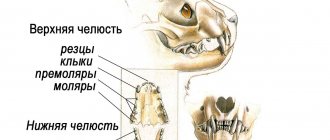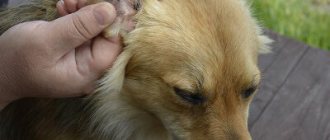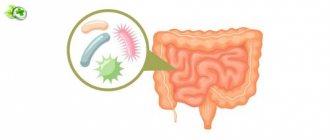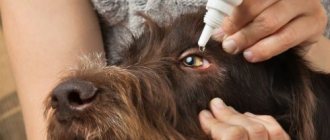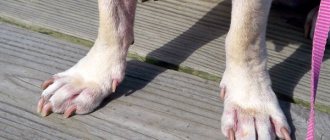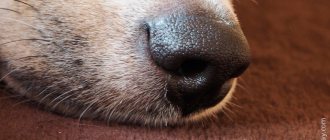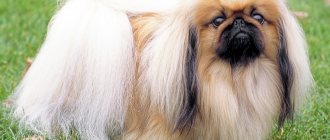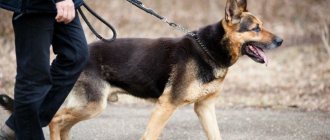Taking responsibility for the life and health of a pet, owners must understand that a dog, just like a person, will require daily hygienic care. Many people often miss the point that it is necessary to take care of the dog’s oral cavity. If you do not follow some hygiene procedures, this can lead to a number of difficulties in the future. Therefore, let's find out how to properly care for the oral cavity of dogs, what can be done at home, and in which cases you should seek help from a specialist.
Why do dogs need teeth brushing?
If left untreated, tartar may form, which will injure the gums and have a negative impact on the entire oral cavity. As a result, the dog will not eat well, which will certainly affect his overall health.
A dog's teeth deteriorate, just like people's. There are several main factors that can provoke such a process:
- Hereditary factor. Some breeds are much more prone to dental problems, so greater attention should be paid to hygiene.
- Poor nutrition. The lack of necessary elements negatively affects the condition of the animal’s oral cavity.
- Lack of hygiene.
- Some diseases that occurred at a young age.
Note! Dental problems can occur due to traumatic injuries.
How is tartar removal done in dogs?
Tartar in dogs is common. This is due to several factors: neglect of hygiene procedures, heredity, consumption of sweet foods, small amounts of solid food in the pet’s diet, high acidity of saliva. Tartar forms from loose plaque, which must be cleaned off regularly. If the disease is neglected, the pet’s condition may worsen.
The process of cleaning tartar is very painful, so it is often performed under anesthesia. Anesthesia is necessary for dogs that show aggression, animals with unstable psyches, and representatives of guard breeds. Before anesthesia, the veterinarian will examine you and refer you for additional examinations (X-ray, ECG, blood test).
Ultrasonic teeth cleaning is a more modern procedure. It allows you to quickly and effectively get rid of tartar. At the end of the procedure, the oral cavity is treated with disinfectants. If necessary, anti-inflammatory or antibacterial therapy is prescribed.
Mechanical cleaning of teeth from tartar is a cheaper procedure, but also less effective. This cleaning is always performed under anesthesia, as it is more painful. A special device is used to manually remove accumulated deposits on the teeth. After the procedure, the oral cavity is also disinfected. The disadvantage of this procedure is that due to mechanical stress, microcracks form on the teeth, in which plaque then accumulates much faster.
Is it possible to avoid the formation of tartar? Yes, if you perform a number of preventive and hygienic procedures, such as: using products to stop the mineralization of plaque, encouraging your pet with chewable treats made from pressed veins or deer antlers.
Some small breed dogs are predisposed to the formation of tartar in the mouth due to the fact that the structure of their mouths is narrow and the teeth are located closer to each other. Such dogs include Yorkies, Spitz, and toy terriers. They will require more preventative care than other dogs.
How to care for your teeth at home
It is necessary to accustom an animal to oral hygiene from an early age. Otherwise, an adult dog will be categorically against such procedures. You need to teach your baby from puppyhood, so he will perceive hygiene as something necessary and constant.
Attention! The dog's milk teeth, which remain with the dog for about six months, do not require special care, but permanent ones must be treated with attention.
The process should not take a long time so that the dog does not get nervous
Special brushes and pastes are used to clean yellow teeth. You can purchase such things at a veterinary store; it is recommended to explain to the seller what exactly is required. It is important to choose the most comfortable brush so as not to cause discomfort to the dog.
The training process takes some time, the dog will not immediately agree to such a procedure, so you should be patient. Experts recommend carrying out such actions when the dog is a little tired, then the risk of resistance is significantly reduced. After some time, the animal will calmly accept the cleaning and not resist.
How to train a pet
If your dog absolutely refuses to brush his teeth, offer him a synthetic bone.
Although dogs lose their baby teeth to permanent teeth at four months, it is important to start caring for their mouth from an early age. This is necessary in order to accustom the puppy to hygiene. You can brush your baby teeth without toothpaste, but your four-legged friend will already get used to the procedure.
It is recommended to brush your teeth after playing or walking. In this case, the pet is as relaxed as possible, he has no strength to resist. After the procedure, you can reward the dog with a treat, but only if he endured this event steadfastly. If your four-legged friend does not allow the cleaning to be completed by his behavior, he will be deprived of the reward.
During the procedure, the owner should be careful not to frighten the pet with sudden movements and loud sounds. Your dog should associate brushing his teeth with something pleasant, otherwise cleaning his furry friend's jaw will become a real problem.
How to properly and with what to brush your dog’s teeth at home, inside and out
There is a simple technique for brushing the teeth of a Yorkie or any other pet at home:
- First, the animal should be shown the toothpaste and allowed to smell it. As a rule, such items have a pleasant aroma, so the dog will perceive them as safe for him.
- Next, you should show the dog the principle of the procedure - gently lift the upper lip and move your finger along the gums and teeth.
- After this, it is recommended that the pet be shown the brush and also allowed to sniff it so that he understands that it is safe.
- After all the “acquaintances”, if there is no resistance, you can carefully begin cleaning - first treat the outside.
- After this, you can try to clean the inside of the mouth, but there is no particular need for this, because the animal itself is capable of cleaning plaque from the teeth in this area.
Attention! During the procedure, it is recommended to behave calmly and communicate with the animal so that it is not afraid or nervous. Otherwise, the dog will start to break out and bite.
Not every dog is ready for grooming procedures, so they may be very nervous
The first cleanings should be short and quick so as not to frighten the pet. In the future, the duration of the procedure should be gradually increased. After everything is over, it is recommended to praise the animal and give it a “yummy treat”.
Cleaning a dog's teeth - step-by-step instructions
Prepare everything you need and start brushing your teeth:
- Call the dog to you and give the command “Sit”.
- If necessary, have an assistant restrain the animal. Fixation should be careful and not cause panic in the pet.
- Let your dog sniff the toothbrush and the toothpaste applied to it.
- Pet the animal and talk softly to your pet, while simultaneously lifting its upper lip on the desired side.
- Using a top-to-bottom motion, brush any remaining food from your teeth.
- Repeat steps 4 and 5 for the left side and front teeth.
- Move your lower lip down and in the same way (the movements will now be made from bottom to top) brush the front surfaces of your lower teeth.
- To clean the inside of the back teeth, place the bristles of the brush from the inside of the dog's jaw and try to use a scrubbing motion.
- If necessary, apply soothing gel to your gums.
- Be sure to praise your pet, give him a favorite toy or, as a bonus, a treat - intended for cleaning teeth or not requiring chewing.
Photo: passionate_eye_dot_org
How to train a dog to brush its teeth
You need to train your pet from an early age. It is required that the animal calmly endures the entire process. It is recommended to do the following:
- Call your baby and praise him when he comes.
- Gently lift your upper lip, first on one side, then on the other, and hold it in this position for a while. Praise the baby again.
- Then you need to open the mouth and also hold it in this form for some time.
- After this, you should feel your teeth and cheeks. The baby needs to be held tightly, but at the same time reassured and praised.
- After such a procedure is perceived calmly, you can begin to accustom him to the cleaning itself.
Common Oral Diseases in Dogs
Dental plaque is considered one of the most harmless diseases. Regular hygiene procedures make it easy to remove at home.
Tartar is a more serious problem. As a rule, it forms when plaque has not been removed for a long time. Tartar not only looks unsightly, but can lead to tooth loss.
Gingivitis is an inflammatory process that occurs as a result of advanced development of tartar.
All of these diseases are also the cause of unpleasant odor from the dog’s mouth.
In order for your pet to feel good and maintain strong and healthy teeth for a long time, from the very first days of the dog’s appearance in your home, you need to pay special attention to your pet’s hygiene.
Age characteristics
Dogs' teeth change as they age. Puppies have baby teeth, you can simply wipe them with a soft cloth or brush them with a soft brush; you don’t even need toothpaste.
When changing teeth, the procedure must be carried out carefully so as not to damage the gums. When the replacement is over, you can choose harder brushes and select suitable toothpastes.
Teeth wear down with age, so older dogs need to be treated with extra care. During this period, it is necessary to replace the brush with a softer one, and when brushing, try not to injure the gums.
Attention! Damaged teeth must be brushed carefully to avoid negative situations.
It is better to teach hygiene from childhood
Preparatory actions
Toothpaste is equally suitable for both large and small dogs.
First, you need to prepare the necessary tools, etc.:
- toothbrush;
- toothpaste for dogs;
- tweezers;
- napkins or towel;
- delicacy.
You need to call the dog and praise him. Let them smell the instruments that will be used to clean their teeth. Then place your pet in a bathtub, shower stall, or place it comfortably on a table, having previously laid out a towel.
You need to choose a place that is as convenient as possible for the owner and with close access to water.
The dog needs to be properly secured: you should hold it by the head with your left hand (with your right hand for left-handers), bending the upper lip near the nose, gradually moving closer to the cheeks as you brush your teeth. In the other hand, take a toothbrush (any type that is most convenient for the owner), after moistening it and applying a small amount of dog teeth cleaner. It is important to monitor your dog’s paws – you should not allow your pet to slide or be in an unstable position.
What to do if your pet “grunts”
The animal may involuntarily swallow liquid when rinsing the mouth, as a result of which it begins to snort and cough. If such a problem occurs, you need to stop the procedure and allow the animal to cough normally.
If the reaction is very strong, then you need to lightly slap the dog between the shoulder blades. However, it is necessary to take into account the size of the animal - babies do not need to tap with their entire palm, just their fingers are enough. In this case, the dog must be positioned horizontally, with the head and front part tilted forward.
How to brush teeth
If the owner plans to carry out the cleaning procedure himself, then he should use only a special paste for dogs. You cannot brush your pet's teeth with toothpaste intended for humans. The smells of human products are too strong for animals. In addition, the dog will inevitably swallow the product, which will lead to digestive upset.
Depending on the breed and size of the animal, you can choose a special brush in the store. Pastes are produced both preventative and therapeutic, specialized - for tartar.
For owners who have problems with cleaning, special products are produced that do not require a brush: gels, sprays. Simply apply them to the animal's teeth and they will do their job.
How often should you brush your dog's teeth?
Adult pets undergo the procedure more often than children - once every couple of days, or even daily. All means for this process are safe and do not cause harm. However, before doing this, it is recommended to consult a specialist.
Is it possible to brush a dog’s teeth with tooth powder, human toothpaste, children’s toothpaste, or hydrogen peroxide?
Unfortunately, not all owners can get to specialized places to buy the necessary items for brushing their teeth. In such a case, a natural question arises: is it possible to use products intended for humans? The answer is simple - no, you can’t. While the brush can still be adapted somehow, human toothpastes are not suitable for dogs at all.
In this case, it is permissible to use hydrogen peroxide. The three percent solution must be diluted with water in a concentration of 1/3, moisten a bandage in the resulting liquid and gently wipe the animal’s teeth with it. However, it is not recommended to use peroxide for a long time - it can negatively affect tooth enamel.
Similarly, you can also use activated carbon, an aqueous solution of chlorhexidine.
Dogs with non-standard jaw placement must undergo the procedure carefully.
Toothpaste and powder for pets
Toothpaste for dogs must be edible and also approved for nursing or pregnant bitches
Products for caring for the oral cavity of your four-legged friend can be purchased at a veterinary store. The same goes for the brush. There are brushes of different sizes. Some people prefer devices that fit on their finger. If you don’t have a special dog brush at hand, you can temporarily use a regular one, but always with soft bristles so as not to injure the animal’s gums. You can also wrap a piece of bandage or gauze around your finger to clean your teeth, apply a hygiene product to it and remove plaque.
In veterinary stores you can see all kinds of toys and special food for cleaning teeth. Chewing on these treats is actually good for your dog. Thus, part of the plaque is eliminated and the gums are massaged. However, this is not a guarantee of oral health. Toys and special dog treats such as toothpicks do not relieve the owner of the responsibility to carry out oral hygiene for the pet.
Some people use tomato paste to remove plaque or simply give the dog a whole tomato and then clean the teeth with a special paste. According to experienced dog breeders, this “old-fashioned method” gives good results.
Can I use human toothpaste?
Toothpaste flavors give the composition a pleasant taste for dogs
Human toothpaste and powder cannot be used for these purposes. The composition of such products is not suitable for animal oral hygiene, and fluoride and other additives are toxic to your four-legged friend. And it’s unlikely that your pet will like pasta with the smell of mint or fruit. He will prefer a special product with the aroma of beef, liver or fresh bones. As a last resort, chalk with the addition of lemon juice is used for pet oral hygiene.
Alternative Cleaning Methods
Various methods are used to clean dogs' teeth:
- Toothbrushes. There are many different devices that are made taking into account the size, breed of the dog, and jaw structure. Brushes are available in different sizes, with soft and hard bristles, double-sided and single-sided. On sale you can even find brushes that fit on your finger. For large dogs it is better to take products with a long handle, for small breeds (Yorkshire terriers, Chihuahuas, dachshunds, Spitz, Chinese Crested) - with a short handle. The cost of the brush depends on the manufacturer and size.
- Liquid. Liquid toothbrush is a solution that is added to drinking water. This is a kind of rinse aid that has no smell or taste. Pets respond well to this product; it freshens their breath and gets rid of unpleasant odors. However, it is not able to cope with enamel contamination and tartar.
- Napkins. On sale you can find special wet wipes that are used to wipe the animal’s teeth. The impregnation contains the necessary components that have a refreshing, soothing and anti-inflammatory effect. No special preparation is required before using the wipes. It is important to close the package tightly to prevent the contents from drying out.
- Gel. A similar product is used as follows: a small amount is applied to the bottom of the tooth and left for 10-15 seconds. After this, use a brush to remove the gel in the direction from the gums to the tip of the tooth. The cost of such a product is quite high.
- Spray. Sprays are great for dealing with unpleasant odor in a dog's mouth, but they are not suitable for removing tartar and plaque. Therefore, this remedy can only be used for certain cases.
- Lotions, rinses, emulsions. These drugs differ in composition, but have almost the same effect. The products help keep the mouth clean, but it is not recommended to use them as the main remedy, since they are not able to cope with plaque and tartar.
- Specialized treats. In stores you can find a variety of treats that you can give your dog to clean his teeth. During chewing, mechanical removal of stone and plaque occurs.
- Sticks and bones. Animals really like treats and can even be used during training. Manufacturers produce the product in different flavors, often containing various vitamins. It is recommended to take into account the age and breed of the dog when purchasing - products vary.
- Dry food. Some manufacturers produce dog food that is designed to care for teeth. Such food has a specific form; when chewed, it allows you to get rid of plaque and clean the enamel.
- Toys. Pets happily chew on them, strengthening their gums. In addition, such gizmos stimulate the mental and physical activity of the animal.
The brush is selected based on the size of the animal
Additional Tips
It is important to properly accustom your pet to brushing its teeth so that this procedure does not cause negativity in it.
It is much easier to accustom a puppy to something than an already mature dog. Therefore, your dog should be taught to take care of its teeth from a young age.
You should be careful and use alternative methods of caring for your dog's mouth when necessary, such as when playing.
How to teach a dog to brush its teeth
First of all, a dog should not be forced to brush its teeth if it does not like the process.
The dog got used to brushing his teeth (video)
During training, observe the following rules:
- Get your dog used to brushing its teeth gradually. For example, start with once every two weeks and gradually increase the number of procedures to 2 times every 7 days.
- Cleanse at the same time, for example after an evening meal.
- When brushing for the first time, introduce your dog to the brush and paste and let him smell it.
- Always talk to your pet while brushing.
- When the first signs of aggression appear, you should interrupt the procedure and calm the animal.
- Every time after brushing your teeth, be sure to praise your pet, pet him, and give him his favorite toys.
Be careful
Be sure to follow the principle “Do no harm.” Sudden movements will cause pain to the dog, which it may perceive as an attack and begin to defend itself. As a result, your pet may bite you. Of course, this will not be done out of malice, in this case there is no point in scolding the pet, but the procedure should be interrupted.
Therefore, in order to avoid injuring the dog and not being injured yourself, you should be careful and careful.
If your pet refuses to brush its teeth, it is better to postpone the procedure for a while. Don't let your dog get too nervous so that he doesn't show aggression.
Brushing your teeth while playing
It is noteworthy that cleaning can also be done in a playful way. Manufacturers offer a wide selection of different teeth cleaning toys for dogs. They are various “bones”, “dumbbells”, “balls” and even come in the form of different animals.
The peculiarity of these toys is that their surface is corrugated and is capable of removing some plaque and food debris, as well as massaging the gums.
Toy for the prevention of dental problems. Photo: Will Miller
The toys you choose depend on your dog's size and preferences. Some people prefer ball toys, others in the form of animals.
Many dogs love so-called “rope rings” or “ropes” - they are used not only to maintain dental hygiene due to their texture of intertwined threads, but also as a fun game - tug of war between the owner and the pet or several dogs.
But it should be noted that such teeth-cleaning toys are only suitable as an alternative if it is impossible to use a toothbrush and toothpaste, or as an addition to the main type of brushing.
How to brush a dog's teeth with a bandage and tomato paste
Many owners use various folk remedies to clean their dog’s teeth at home. One such substance is simple tomato paste. It perfectly helps to cope with plaque.
It is necessary to wrap your finger in a bandage, dip it in tomato paste and then clean the animal’s teeth with a similar product. With regular use, the results will not be long in coming. You can even give your dog a whole tomato. This is beneficial not only for the oral cavity, but also for the whole body.
Silicone brushes are very comfortable to use
Do dogs have their teeth brushed?
Just like humans, dogs develop plaque on their teeth after eating. Dental plaque is an invisible film, a “cocktail” of food debris, bacteria and rejected oral cells. Although this film is not visible, plaque is an excellent tool for the development of caries, damage to tooth enamel by accumulated bacteria.
In the absence of regular dental care, the thin film hardens and turns first into visible plaque, and later into hard tartar.
Plaque on a dog's teeth. Photo: enot.zp.ua
All these processes lead to bad breath, gum damage, toothache and tooth loss. The worst thing is that dirty teeth are a constant source of infection, which can spread to your pet’s internal organs and lead to serious illnesses.
Taking care of your dog's oral cavity by brushing his teeth will help reduce the risk of such problems.
How to replace brushing your teeth
If the dog categorically does not accept cleaning, then you can replace it with various treats and toys - this will help remove plaque from the enamel. In particularly advanced conditions, you will have to contact a veterinarian and carry out cleaning with special means.
Clinics offer several types of stone removal:
- mechanical;
- laser;
- ultrasound.
At the same time, such softening and removal can negatively affect the psychological state of the dog, so it is often suggested to use anesthesia. The decision is made by the veterinarian after examination.
You can also replace brushing your teeth with proper nutrition - it is recommended to give your dog raw vegetables and fruits, dry food, which help remove plaque from the enamel.
You can only brush the outside of your teeth
Procedure algorithm
The procedure should be carried out within 2-3 minutes. A four-legged friend should not experience discomfort - only in this case will he be favorable towards this process. If the owner did not have time to treat the entire mouth, then it is better to do it next time or at least in a few hours.
There is a clear algorithm for how to brush your dog’s teeth at home. The action steps are as follows:
- Let the dog smell the toothpaste and brush. If he is well acquainted with these means, it is enough to simply show them to your pet.
- Lift your pet's lip and run your finger along the gums.
- Clean the outer side of the fangs first, gradually moving the brush in one direction. You need to move from the junction of the fang with the gum to its pointed end. You shouldn't press too hard.
- Press on the mouth so that the pet opens its mouth.
- Treat the inside.
Pets that eat dry food clean the plaque from the inside themselves, so this cleaning step can be skipped. After the successful completion of the process, you should encourage the pet, pet and praise it.
Expert advice
Any specialist recommends paying attention to dogs’ oral hygiene. Regular prevention will help cope with problems. It is recommended to accustom the animal from a young age. Then, as the pet grows older, it will not be afraid of the procedure, but will begin to tolerate it calmly.
It is necessary to undergo regular examinations by a specialist, this will allow you to detect the problem in time and, if necessary, begin treatment immediately. It is important to take care of the teeth of dogs with distinctive jaws, such as French bulldogs.
There are different ways to clean up your dog's mouth.
It is worth remembering that preventing a disease is much easier than treating it. Therefore, it is recommended to constantly monitor your dog’s teeth, carry out hygiene procedures on time and visit specialists. The choice of teeth cleaning products is quite wide, so if you wish, you can choose what suits you best.
General recommendations for oral care in dogs of various breeds
You have already realized that caring for a dog’s oral cavity requires additional effort on the part of the owner. We must not forget that dental health can affect the general condition of the animal. You should be careful and patient, using different methods of cleaning your teeth if necessary. Each owner chooses which method to use independently, focusing on his pet. If you can’t get your dog used to brushing its teeth, try other training methods or contact a training specialist for help.
Useful tips
The choice of which paste to use is an individual matter. It is recommended to carefully study the composition to avoid allergic reactions in the animal. You also need to use the substance carefully, monitor the dog’s condition and how he perceives the procedure. The best option is to teach your dog to brush its teeth from early childhood.
Toothpaste for dogs is an excellent product that helps keep your pet's mouth in perfect order. The choice of substance depends on many parameters that must be taken into account in order not to cause discomfort to the pet.
How to brush small dogs
Separately, it should be noted situations when small breeds need to be cleaned: Yorkies or Chihuahuas, Spitz and the like.
The teeth of such dogs are less cleaned than those of larger dogs. As a rule, owners do not give dry and hard foods to their pets. However, the condition of such a dog’s teeth is very important not only because of its health, but also because of its high exhibition activity.
The cleaning procedure is no different from those performed on other dogs. In addition, you can use special dry food, or soak dry food in tomato juice.
